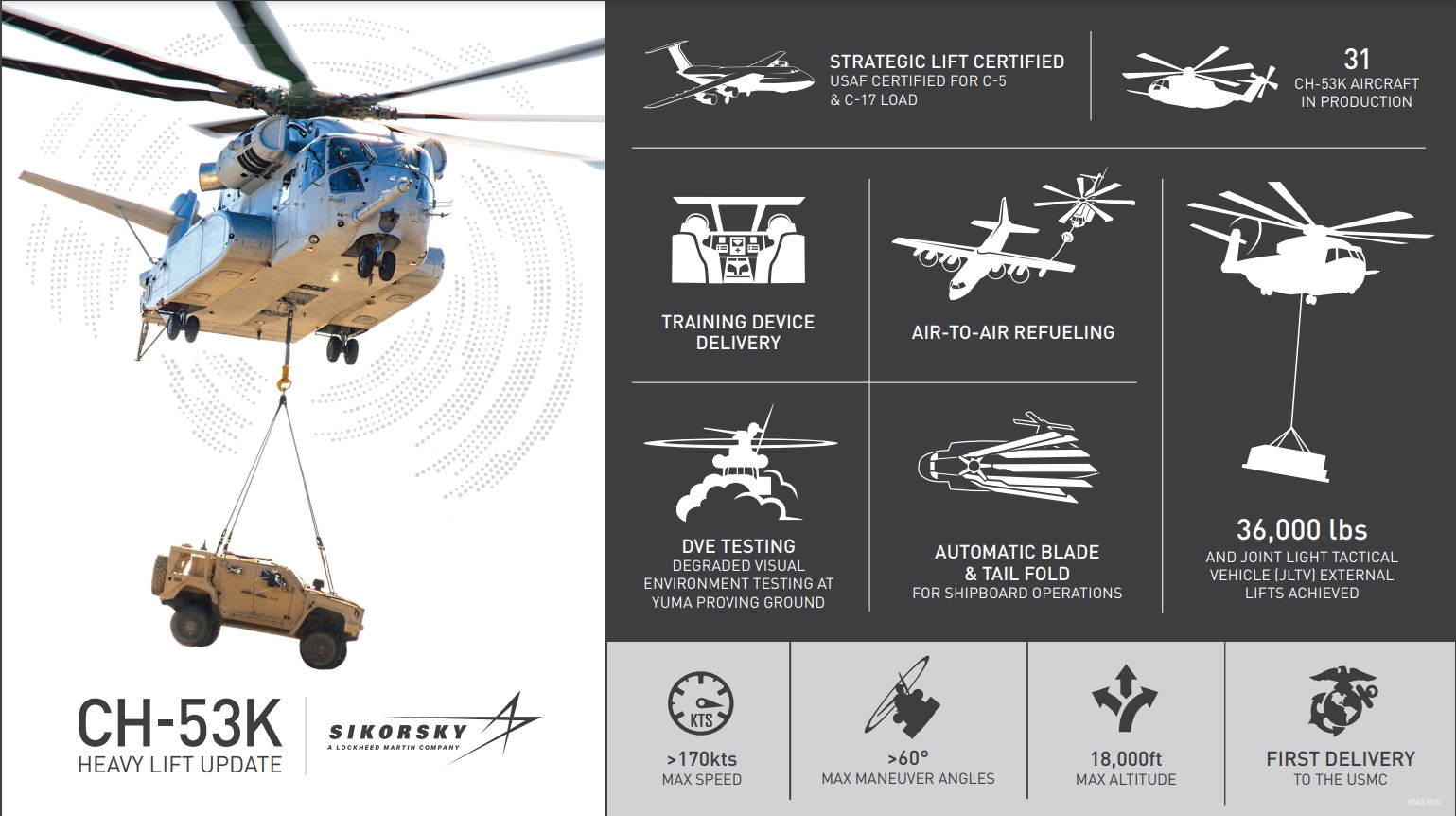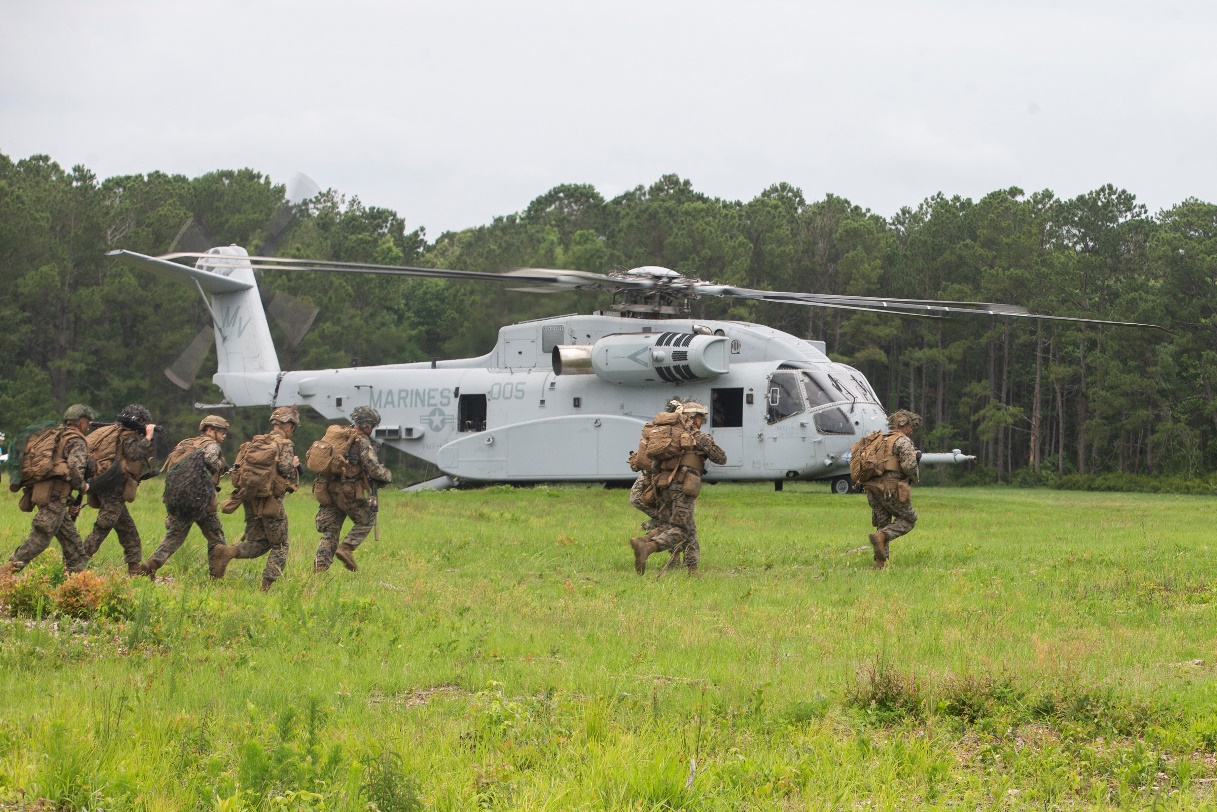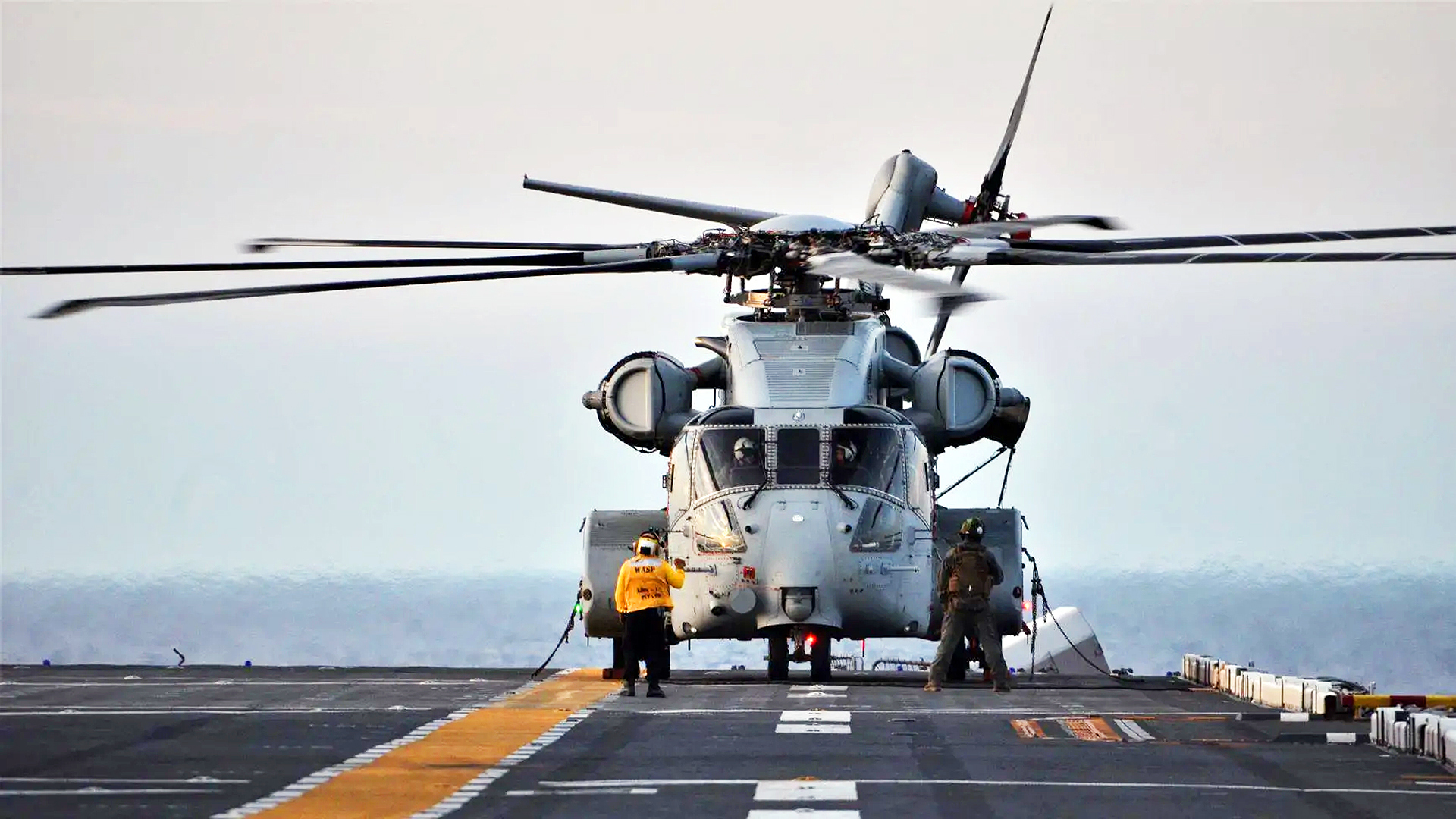With a decision by the U.S. Navy to begin full-rate production of the CH-53K heavy lift helicopter, Sikorsky will ramp up to building more than 20 King Stallions a year to supply the Marine Corps with a new heavy-lift rotorcraft capability.
The Marine Corps plans to purchase 200 CH-53Ks, and Sikorsky says it will build as many as two per month at the height of production, a total of 24 per year, to feed the service’s demand for a CH-53E Super Stallion replacement.
“Ramping up production of the most technologically advanced helicopter in the world allows the U.S. Marine Corps to build out its CH-53K King Stallion fleet and support mission success,” said Bill Falk, director of the Sikorsky CH-53K program. “This production authorization stabilizes Sikorsky’s domestic supply chain and is a testament to our enduring partnership with the Marine Corps.”

Sikorsky, now owned by Lockheed Martin, is procuring long-lead items and critical materials to support executing full-rate production of its CH-53K helicopter at its factory in Stratford, Connecticut. The King Stallion is built in the same facility where Sikorsky builds all variants of the H-60 Black Hawk. Sikorsky will evict the Black Hawk line that currently runs parallel to CH-53K production in Stratford and will double capacity to accommodate full-rate production. Ongoing H-60 production will continue at a different location at the same facility.
The most-recent infographic from Sikorsky, seen below, shows 31 CH-53Ks in some state of production. In earlier interviews, Sikorsky officials said the Stratford facility could potentially produce as many as 36 King Stallions per year.

The announcement also marks the CH-53K entering its deployment phase, after a successful review of the program by acting secretary of the Navy for Research, Development and Acquisition Frederick Stefany. A formal declaration of full-rate production was made on December 21, according to a statement from Naval Air Systems Command (NAVAIR).
The Marine Corps declared Initial Operational Capability (IOC) for the CH-53K helicopter in April, when the 2nd Marine Aircraft Wing at Marine Corps Air Station New River, North Carolina, became the first operational squadron to receive, maintain and operate the CH-53K King Stallion helicopter.

That validated the platform’s operational readiness to forward deploy Marines and equipment across the globe, according to NAVAIR. The aircraft is on schedule to fully equip its first unit and declare full operational capability in fiscal year 2029, NAVAIR said. Israel has also chosen the CH-53K to replace its aging legacy CH-53 “Yas’ur” fleet. Given the choice between the CH-53K and Boeing’s CH-47 Chinook tandem-rotor helicopter, Germany chose the Chinook in a head-to-head competition.
With the decision, NAVAIR’s H-53 Heavy Lift Program Office, also called PMA-261, can begin ordering larger quantities of helicopters, allowing for greater production efficiency and cost reduction. Sikorsky said it also instills greater confidence in its network of component part suppliers, of which there are more than 200 in 34 states.
“We have successfully demonstrated the performance and reliability of this aircraft,” said Col. Kate Fleeger, PMA-261 program manager. “With FRP, we will continue to build on the strong manufacturing, sustainment, and support established for the CH-53K.”
Reaching full-rate production is a major milestone for the CH-53K, which experienced growing pains that pushed back its timeline and delivery date on several occasions. After overcoming issues that included a cracked main rotor gearbox, the Marine Corps took delivery of the first test aircraft in 2018. It then experienced engine exhaust ingestion problems that have since been corrected. Another issue was the 53K’s ability to fly in dusty environments similar to terrain commonly found during the wars in Iraq and Afghanistan.

Marines with the service’s Operational Test and Evaluation Squadron 1, or VMX-1, have been training with several CH-53Ks at Marine Corps Air Station New River in North Carolina and elsewhere since the first delivery.
While still undergoing operational assessment, two CH-53Ks from VMX-1 successfully recovered a Navy MH-60S Knighthawk helicopter from Mount Hogue in the White Mountains of California in September 2021. Two of the initial test aircraft flew across the country from North Carolina to California in August to test aerial refueling and self-deploying capabilities, while also practicing desert and mountain operations at Marine Corps Air-Ground Combat Center in Twentynine Palms. From there, one of the 53Ks recovered the Navy MH-60 from the mountainside where it made a hard landing and was left by its crew.

The CH-53K is the largest operational helicopter in the U.S. military’s inventory. Powered by three 7,500-shaft-horsepower General Electric GE38-1B engines, it has a maximum design gross weight of 88,000 lb. The aircraft can lift 36,000 lb. (16,330 kg) on its underbelly center hook and carry 37 combat-equipped Marines on top of its two pilots and crew. When it enters service, it should be able to carry a 27,000 lb. external load 110 nautical miles. That’s more than triple the external load capacity of the CH-53E it will replace.
Increased range and payload capacity are of paramount importance to the Marine Corps, which foresees itself fighting over great distances in the Asia-Pacific region, where its forces would be distributed over vast areas aboard ships and small islands.
Still, the King Stallion still has a lot to prove and big shoes to fill. The CH-53E has been a staple of the USMC for decades, but these aircraft are old and have been worked very hard, especially over two decades of perpetual warfare in Iraq and Afghanistan. As a result, the CH-53K, if it lives up to its stated potential, should be a critical breath of fresh air for Marine Corps.
Contact the author: Dan@thewarzone.com
